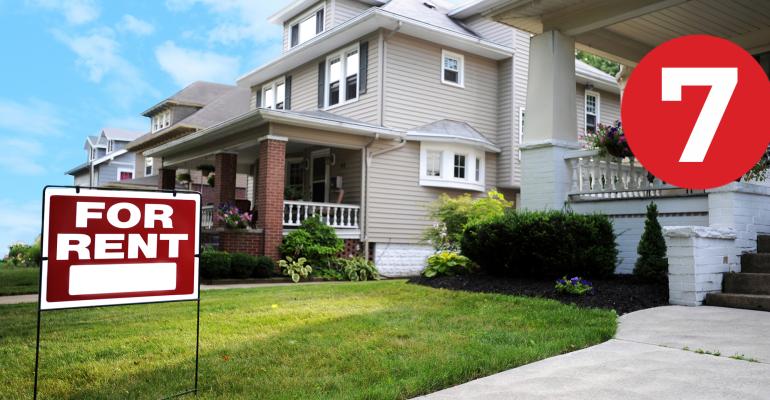- Three Million U.S. Households Making Over $150,000 Are Still Renting “The number of Americans earning more than $150,000 has been rising in recent years. But higher mortgage rates and steeper home prices have put home purchases beyond the reach of many of these relatively high-earners. Other affluent renters can’t find a house that meets all their expectations, or want to rent in a new city before making a decision on what to buy. Some want to remain mobile and prefer the flexibility of renting over the commitment of homeownership.” (The Wall Street Journal)
- REIT Analyst Alex Goldfarb on Real Estate’s ‘Recession’ “The FTSE Nareit stock index, a benchmark for U.S. REITs’ performance, is down roughly 20 percent over the past year, compared to a drop of about 8 percent for the S&P 500. Goldfarb talked with The Real Deal about how rising interest rates are squeezing commercial landlords, what investors are telling REIT managers and what it’s been like covering the industry and its people for 20-plus years.” (The Real Deal)
- iStar, Safehold’s $1.6B Merger Moves Forward “Stockholders of both iStar Inc. and Safehold Inc. have voted, in separate virtual special meetings, to approve the proposed merger between iStar—Safehold’s largest shareholder—and Safehold. In addition, iStar stockholders approved the issuance of iStar common stock in connection with the move. The merger reportedly will create the only publicly traded, self-managed, pure-play ground lease company.” (Commercial Property Executive)
- Moody’s, Others Say Industrial Sector Starting to Soften “Despite elevated manufacturing and consumer goods production through 2022, the industrial sector is reflecting the start of a softening period, according to Ermengarde Jabir, senior economist at Moody’s Analytics, in a report published on the Scotsman. Jabir said this is occurring across distribution and warehouse properties, as well as flex spaces for research and development purposes. ‘Many U.S. metros are seeing lower or even negative absorption rates, although last year also featured more completions as developers and investors sought to capitalize on the booming sector,’ she said.” (GlobeSt.com)
- Oregon PERF to Commit Up to $1.1Bn to Real Estate in 2023 “The Salem-based investor is working towards its longer-term plan to allocate to more non-core strategies.” (PERE)
- Cracks Emerging in U.S. Office Sector: Loan Defaults Fuel Concerns of More Pain Ahead “Office property owners that were able to weather the worst of the pandemic are crashing into a hard reality wrought by sharply lower demand and higher interest rates. Undercurrents of stress are now emerging in the form of defaults.” (Urban Land Magazine)
- Colleges Have Been a Small-Town Lifeline. What Happens if They Shrink? “For decades, institutions of higher education provided steady, well-paid jobs in small towns where the industrial base was waning. But the tide of young people finishing high school is now also starting to recede, creating a stark new reality for colleges and universities — and the communities that grew up around them. As Americans have fewer children and a diminishing share of young adults pursue a degree, the once-burgeoning market for college slots has kicked into reverse. Although undergraduate enrollment stabilized somewhat in 2022, it’s still down about 7.6 percent since 2019.” (The New York Times)
0 comments
Hide comments





